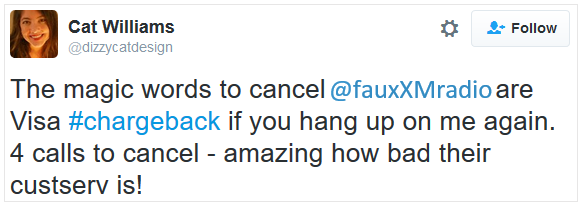Social Customer Service Now an eCommerce Standard
Responsiveness Via Social Media is Vital to eCommerce Sustainability
Social media has a major impact on the way in which merchants conduct business.
Facebook, Twitter, Instagram, Snapchat and others allow merchants to interact with consumers directly, offering a level of connectivity between brands and shoppers unimaginable a few years ago. However, this creates a host of new responsibilities and challenges for merchants as well.
Recent Data Demonstrates Importance of Positive Interaction
Social media is consumers’ preferred method of interacting with brands. More than 80% of consumers across all age groups expect a brand to have, at minimum, a Facebook page. Younger consumers expect a presence across a spectrum of different platforms, and they are more likely to engage via social media than older consumers.
Recent data outlines the situation even further.
- 90% of consumers have reached out to a brand via social media in some way
- Only 11% of consumer messages receive a response from the brand in question
- The average brand sends 23 promotional messages for every one response to their audience
- 73% of consumers have had a negative experience with a brand on social media
- 75% of consumes say they would share a positive experience
The “Wrong” and “Right” Approach
- 70% are more likely to either use or continue using a merchant’s services
- 65% report increased loyalty toward the brand or merchant in question
- 25% are less likely to go to a competitor or post negative opinions about the brand or merchant
Merchants who fail to maintain their social media presence adequately miss out on a great opportunity to build customer loyalty. The study also reveals that when it comes to public relation matters, social media can be a great boon to PR efforts. There are plenty of cases in which simple gestures on a brand’s part can go viral, turning into PR gold.
On the flip side, poor customer service interactions can also be a PR nightmare. The internet is filled with countless lists pointing out the “worst social media fails of the year,” meaning that social media missteps are common enough to have reached internet meme-status.
However, the effects of social media shortcomings are not limited merely to PR matters. Any basic interaction between merchants and customers via social media has certain inherent expectations on the part of shoppers which, if not met by merchants, can lead to chargebacks.
Challenges of Social Customer Service
Maintaining a line of communication between the merchant and customers is like walking a tightrope—it’s easy for something seemingly innocuous to backfire. However, it’s vitally important that merchants not shy away from the challenge. Let’s take a look at some examples provided by Twitter users.
Don’t Let Customers’ Concerns Go Unanswered


When customers complain via social media, they expect an even faster response time than over email or the phone. Forty-two percent of Americans expect a response within one hour, and 24% expect a response in just 30 minutes or less.
Merchants must monitor social media as consistently and thoroughly as possible, for as many hours a day as possible. This way, merchants will be much less likely to see any customers’ concerns slip through the cracks and devolve into a transaction dispute.
Be Open and Receptive to Complaints

When a customer lodges a complaint via social media, the last thing a merchant will want to do is come across as indifferent or dismissive. That will only make the problem worse, leading to further customer frustration.
Even if the customer’s demands seem unreasonable, merchants have to be consistently polite, courteous, and empathetic, and do everything in their power to make the situation right. Otherwise, angry customers will simply demand a chargeback rather than deal with what they perceive to be rude or unsatisfactory service.
Turn Complaints into an Opportunity


When a customer leaves a negative comment via social media, it’s advantageous to showcase the best and most attentive service possible. In demonstrating that they can recognize and fix problems quickly, merchants can actually turn a difficult situation into a positive experience.
Studies show 70% of consumers will return to do business with the merchant if the merchant resolves a complaint in their favor.
By giving disgruntled customers personalized attention, merchants resolve the problem at hand while also imprinting on other customers the fact that the business does provide excellent service. A quick, receptive response acts as damage control on social media, demonstrating to customers that the current issue is the exception, rather than the rule.
Other Customer Service Do’s and Don’ts
General social media best practices will enhance the customer experience even further.
| DOS | DONT’S |
| Complete all of your social media profiles | Spread your resources too thinly |
| Have a presence on as many platforms as possible | Delete users’ posts |
| Check all platforms multiple times daily | Ignore customers’ questions and comments |
| Schedule regular postings | Bog customers down with excessive spam |
| Tag & link other brands, business & users | Steal content |
| Take timing into account to gain more exposure | Post sporadically and irregularly at odd times |
| Be tone-sensitive during times of tragedy and emergencies | Share questionable content |
Social media enables customers to leverage public opinion as a means of ensuring excellent service from well-known brands. Merchants must adapt and provide the best customer experience possible.
By adhering to basic procedures and business best practices for interactions with customers, businesses can do a great deal to minimize chargebacks stemming from friendly fraud and merchant error.
Last Update: July 25, 2016
Tell us how can we improve this post?
Are you interested in a topic we haven’t covered yet? Use our Submit a Question feature to request additional information from our contributing experts.
